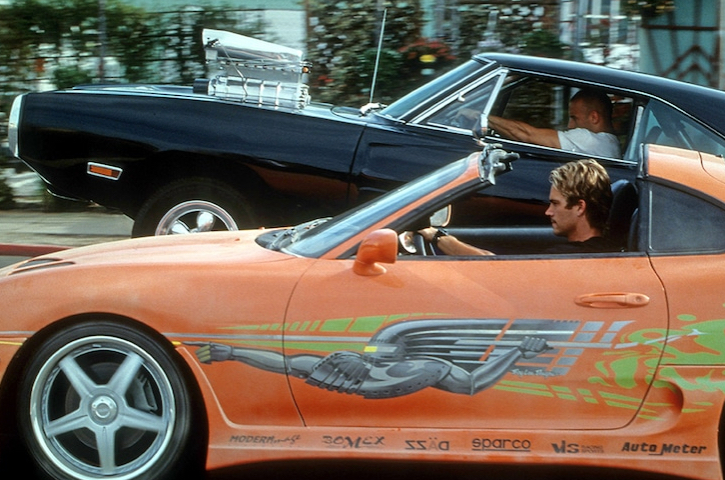
Marketing Needs Brand Trust-ology
October 24th, 2024 Posted by Emergent Brand Beliefs, Brand differentiation, brand marketing, brand messaging, Brand preference, Brand trust, Disruption, Emotional relevance, engagement, Insight 0 comments on “Marketing Needs Brand Trust-ology”Trust failures infect successful brand building…
Now more than ever, earning consumer trust is paramount to the growth and development of your business. You can’t claim it. You can’t invoke it. Trust is only earned through credible, verifiable behaviors and openness. We believe this is sufficiently important that it deserves a unique discipline in the marketing eco-system we’re calling “Trust-ology.” Emerging trend: the world around us keeps supplying consumers with reasons to be skeptical, wary and thus more susceptible to perceiving added risk from engaging the vast array of brands and businesses seeking our attention.
Dramatic and ‘didn’t see it coming’ case in point
The iconic, premium positioned grocery Deli dominant meat brand, Boar’s Head, suddenly faces an unprecedented self-inflicted challenge to its busines and reputation. Tainted meat processed at one of their plants is recalled after 9 customer fatalities and 57 hospitalizations from listeria food poisoning. Amazingly, the investigation reveals an incredible failure in the most fundamental aspects of quality control, food safety and plant hygiene. Astounding. Once again, the world sees a business reputation fouled by performance that incredibly fractures the perception of basic standards and values the public expects. What was hidden behind a corporate veil is suddenly revealed in the intense, bright spotlight of media reporting.
As the lens of this media scrutiny inevitably widened on Boars Head, we also discover disturbing allegations of sexual harassment, racial and disability discrimination the company is facing in the form of lawsuits now getting visibility in the press. Where there’s behavioral smoke, there’s bad reputation fire?
Yet another example of why consumers are skeptical and hesitant of what companies say vs. what they do. What appeared as bright and shiny on the outside (gorgeous roasted hams) is revealed to be darker and without proper values on the inside. Thus, why trust must be earned through openness, vigilance and purpose when brands operate with the consumer’s best interests in mind 100% of the time.
This recurring barrier to brand belief is soaking in reputation challenges
In the digital era, all things that can be known, will be known instantly. Every brand now exists in a glass house that too often reveals breakdowns in trust. We observe brands, businesses and individuals outed on half-truths, misstatements, bogus claims, failures to admit mistakes, reckless hyperbole, baseless assertions, lies by omission, overt selfishness and outright deceit.
Who do you believe?
Who has an unassailable reputation?
Who is honest?
How do you know what’s truthful?
The mechanics of effective brand marketing requires trust. Without it, messaging becomes noise, dismissed as self-promotion wired to self-interest acted out on a paid media stage.
Consumer shift
Consumers today are demanding, for good reason, more information about the products they use and how they were created – some companies are paying attention. Earlier this year, bedding brand Boll & Branch launched Origin Track, which lets consumers trace how their sheets are made, from raw materials to finished product. At the foundation of this development is trust and how to acquire it. Brands that offer more disclosure and information earn deeper loyalty and engagement from consumers.
The dawn of trust-ology
Trust is needed in any brand-to-consumer relationship that lasts. You can’t simply say ‘we’re trustworthy’ and expect consumers to fall in line. Trust must be earned through daily deed and credible supporting action. Trust is the must-have goal as you work (hard) to secure consumer belief in your statements. This requires vigilance and intent.
Anatomy of trust-ology
- Belief is an idea rooted in a form of truth
- Faith is more than a thought — it is a deep-seated conviction
- Belief is centered in faith, and faith is centered in trust
- Trust is actionable, based on a credible, verifiable validation of rightness
Trusted means you accept the sender’s message because you believe they have your best interests at heart. You have faith in them and what they tell you. It is earned through consistent actions and verified by the validation of third-party trusted sources – expert voices without a compromising financial incentive.
The hierarchy of trust-ology
- Consumers come first – you genuinely care about their welfare and happiness
- Their best interests are always served
- It is supported by honesty, reliability and consistency in how you operate (business behavior)
- Your brand is consistently empathetic to their needs and aspirations
Trust-ology as strategy
In a study from Innova Research on the Top 10 Trends of 2023, they report 66% of consumers would trust a company that is upfront and truthful about the challenges they’re facing to operate more sustainably. The report goes on to say honesty and transparency are the most important values related to food. More specifically:
- How food is produced
- Where ingredients are sourced
- How value chain stakeholders are treated
In sum, consumer interest in transparency is fueling demands for more transparency. Why? Enabling trust. Allowing consumers to see for themselves how you do what you do results in credible proof of what you want them to believe. Thus, why trust building is a core proposition underneath brand strength and business growth.
Will you do something bold, new and unexpected in the name of earning credibility?
The trust-ology building platform – Champion Transparency Council
Champion Petfood owns some of the highest standards for quality ingredients in the pet food industry. However, that can be a tough message to credibly convey in an industry known for its lack of transparency and visibility to supply chain details, verified ingredient standards and manufacturing processes. Champion needed to reinforce trust at a critical time when consumers were demanding that pet food companies back up their assertions of high quality, human grade food ingredients.
Three steps to transparency transformation
- Emergent’s solution: build trust through the voices and observations of real people and respected Veterinarian physicians
- The strategic vehicle: The Champion Transparency Council
- Their mission: see everything in every phase of pet food making from farm to production and report on what they witnessed firsthand
Leverage: we tapped into a unique operational commitment at Champion — their legacy long-term contracts to supply fresh proteins from farms, ranches and fisheries within driving distance of their kitchens.
We took Council members to nearby farms and fisheries to witness how animals were raised, chat with farmers and hear about their story and methods. We took them fishing so they could participate in the harvest of fish that would be used in making pet food. They observed the fresh proteins arriving at Champion’s kitchens. We invited them to see and ask questions about every aspect of pet food manufacturing, from intake to final packaging.
Their first-person reports verified Champion’s claims and were published through an array of channels reaching consumers and retailers. It was the truth about pet food making from a company that had nothing to hide and everything to gain by being totally transparent.
The Council strategy nourished Champion’s community of brand evangelists and enthusiasts with validation and proof that their faith was warranted and respected. We provided the media with unprecedented access to Council members for interviews.
Does your organization see transparency and traceability as a business opportunity? If so, how are you surfacing data and information to enable it and help your business benefit from it?
Components of trust-ology
Access
Openness
Dialogue
Customer-first values
Demonstration
Transparency
Integrity and honesty
This approach assures that the marketing story is consistent with company performance and consistent delivery of promises.
Why is this so vital to business growth?
Imagine for a moment that consumers no longer trust the claims and assertions brands make. Consider that their fears of misplaced loyalty and belief are confirmed in surprising moments of outing via an internal whistle-blower, government or media investigation or aftermath of a recall event. This manifests as a compelling need to know more, see more and make an informed evaluation based on evidence provided. Trust is merited through trustworthy actions.
This is why trust-ology should be a component of the marketing discipline, and trust creation must be a considered and embedded platform within the brand marketing game plan.
Open the curtain and let people see firsthand. Actions speak louder than words. At stake is rewarding their faith in your brand. When trust is secured, you should continue to invest in retaining it. As we’ve seen repeatedly, once lost, trust can be hard to reacquire.
- Trusted brands earn loyalty, admiration, and advocacy. Just make sure this commitment is woven into the fabric of your organization’s belief system. Efforts here will make your marketing more effective and your brand more resilient. Someday we hope to see a Chief Trust-ologist on the c-suite team.
If this discussion makes you anxious to discover more about the pathway to deploying trust-ology and belief, use the link below to arrange an informal meeting and start a dialogue on your questions.
Link to Download Champion Case Study
Looking for more food for thought? Subscribe to the Emerging Trends Report.
Bob Wheatley is the CEO of Chicago-based Emergent. Traditional brand marketing often sidesteps more human qualities that can help consumers form an emotional bond. Yet brands yearn for authentic engagement, trust and a lasting relationship with their customers. For more information, contact [email protected] and follow on Twitter @BobWheatley.




